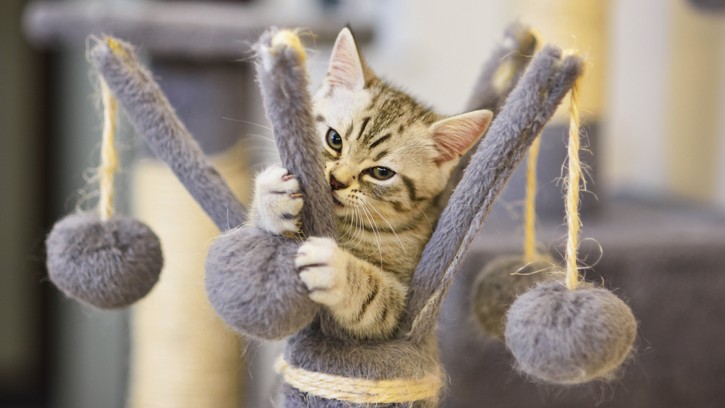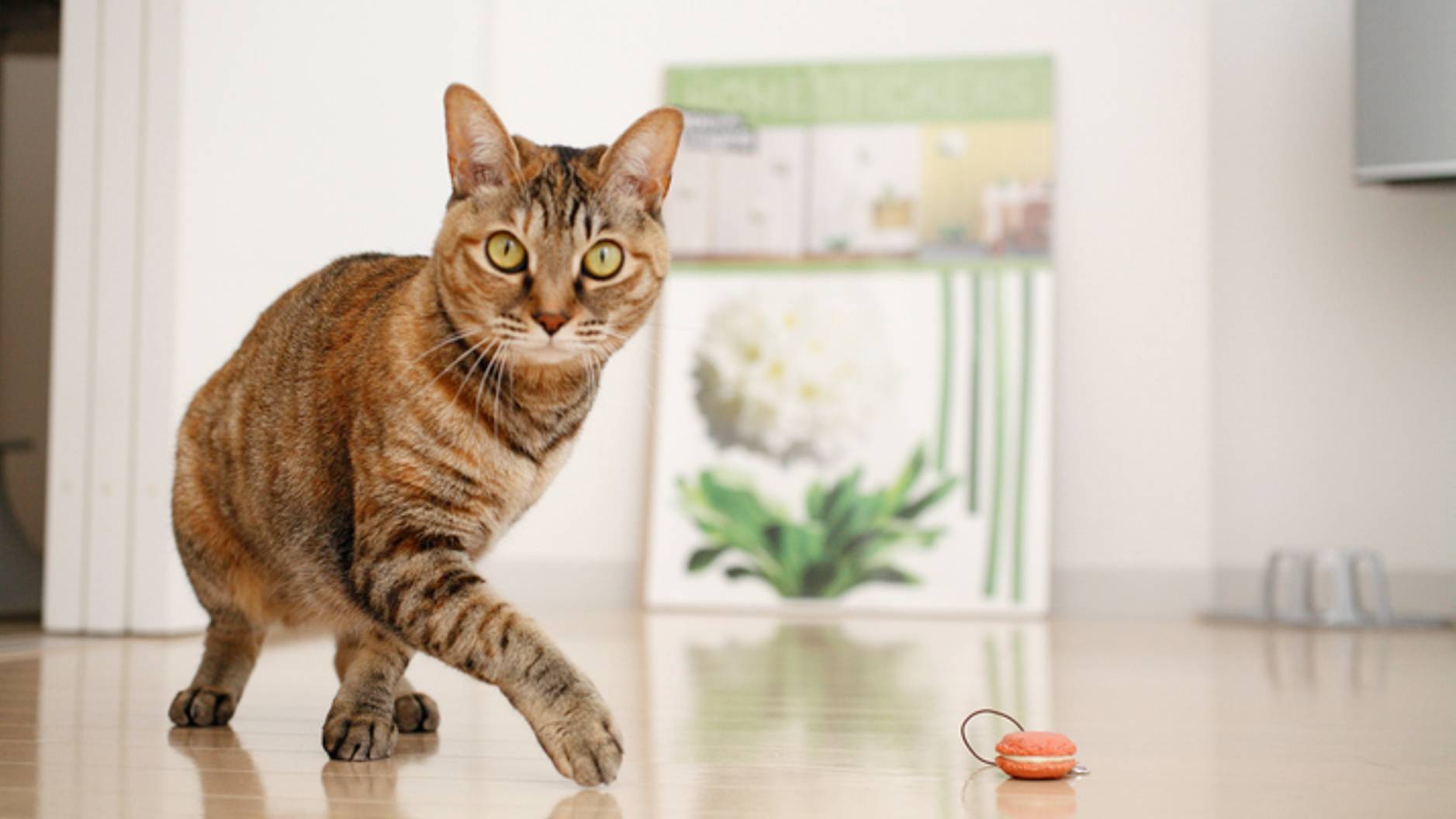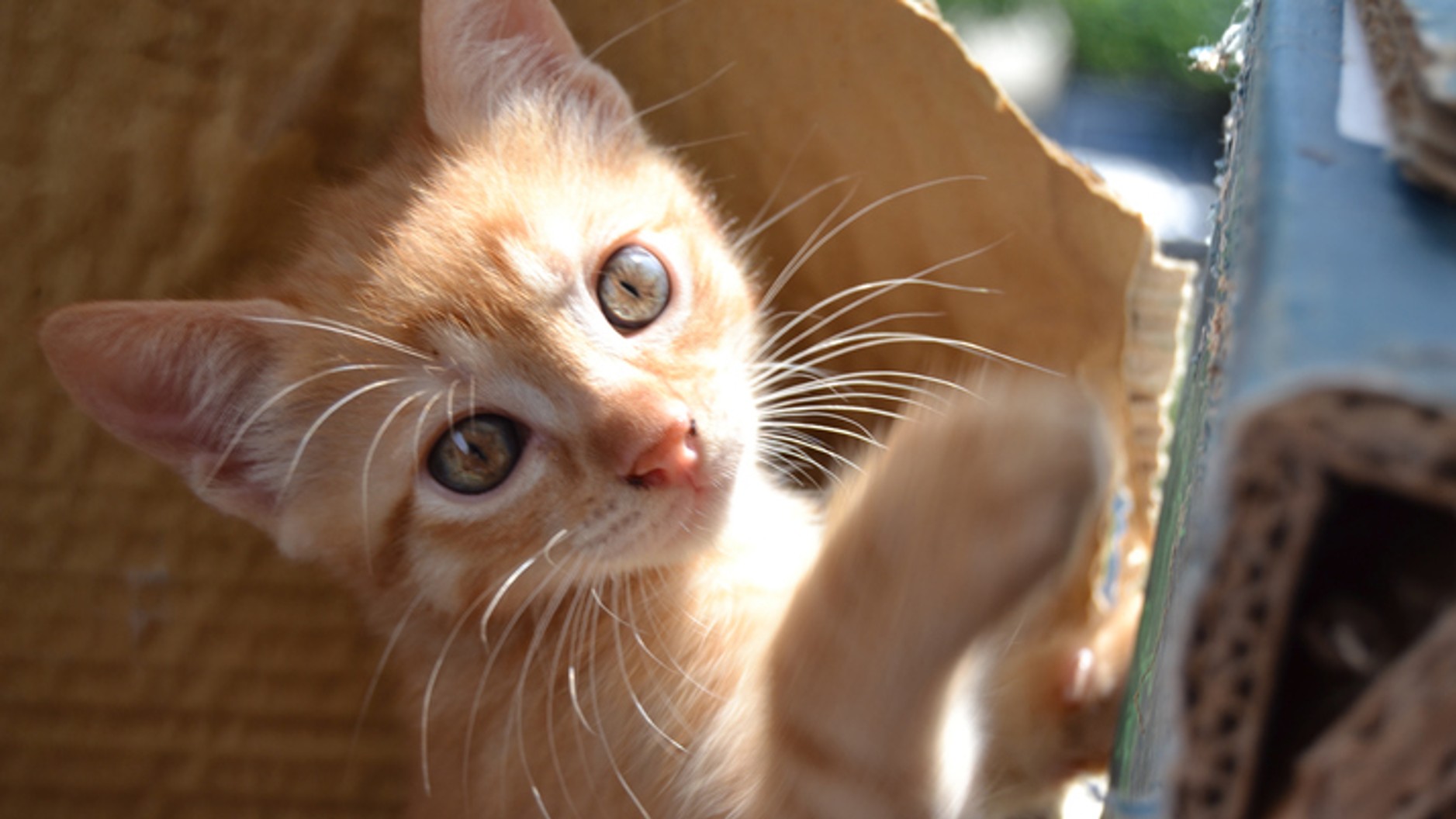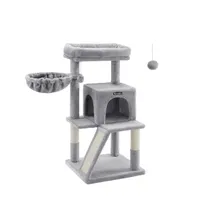How to play with a cat the right way
Learning how to play with a cat is crucial for their mental and physical health – here’s how to do it correctly

Learning how to play with a cat is one of the best things you can do for your feline’s mental and physical health. Not only does cat play keep their mind and body in top shape, but it’s also a great way to strengthen your bond and curb destructive behaviors like scratching and biting.
Cats need around an hour of play every day, which can be broken up into short sessions of 15 to 20 minutes. Investing in the best cat toys can make this easier – whether it’s a teaser wand to keep them active, a catnip plushie to soothe anxiety, or a puzzle to challenge their brain. There are plenty of options to choose from, and most are relatively inexpensive.
Below, vet Dr. Elizabeth Racine shares her six top tips for playing with a cat, ways to keep them entertained when you’re not home, and her favorite games to try.
How to play with a cat
1. Stimulate your cat’s natural instincts to encourage play
A cat’s play behaviors are rooted in his natural instincts, particularly hunting behaviors. Cats love to stalk, chase, pounce, and attack. Cats are particularly attracted to movement, so leaving toys sitting on the floor may not be very enticing to them. To address this problem, set aside some time to actively play with your cat. This can include dangling toys for your cat to jump at, tossing toys for your cat to chase, or even hiding toys around the house and encouraging your cat to find them. Be sure to offer toys of different shapes and sizes, such as small toys that your cat can pick up and toss around and larger toys that your cat can grab and kick.
You can also tap into your cat’s natural hunting instincts by experimenting with toys that mimic prey. Try offering your cat toy mice, laser toys, or toys that chirp to see if any of these options stimulate him to play. Many cats also enjoy investigating different scents. Most cat owners are familiar with catnip, which is a favorite for many cats, but you can also try offering your cat a little silver vine, mint, honeysuckle, or even herbs like basil and rosemary to stimulate his senses. Take a look at our guide to the best catnip toys for some advice on what’s available. If your cat doesn't react to catnip, check out our feature that answers, 'What is silver vine?'
Catit Groovy Fish | Amazon
This automated cat toy moves like a real fish, flopping up and down at the click of a button – perfect for grabbing your feline’s attention! With a catnip tube included and a refillable pocket, our Staff Writer Megan found it more long-lasting than other catnip toys she’s tried in the past. It’s also her cat Chilli’s favorite – even after months of testing.
2. Offer lots of environmental enrichment for your cat
Does your cat lie around the house, napping the day away? Do you find yourself asking questions like why do cats suck on blankets or why do cats eat hair?
Unfortunately, these very common cat behaviors can be a sign that your cat is bored. As many of us have learned, there’s not much to do when you’re stuck in the house all day. Being bored can also lead to problems for your cat, including destructive behaviors, anxiety, and obesity.
Get the best advice, tips and top tech for your beloved Pets
To keep feline boredom at bay, The Ohio State University Indoor Pet Initiative recommends starting with your cat’s basic needs, including a variety of toys, the best scratching post, resting areas, hiding places, and perches or even a cat hammock for vertical space. Just like kids can get bored with their toys, cats also appreciate variety and novelty, so keep extra toys on hand and rotate them frequently to keep your cat interested.
Feandrea Cat Condo | Amazon
This multi-level tree gives your cat a place to sleep, scratch, and play – featuring three beds, two sisal posts, and a hanging ball. The top perch is ultra-spacious, making it a great choice for larger cats.

3. Don’t play using your hands or body
While it may be tempting to tickle your cat’s belly or tantalize a kitten with your fingers, it is best to avoid using your hands or body to play with a cat. It may be cute to let that little kitten nibble on your fingers now, but it won’t be nearly as fun when your cat is fully grown and those bites become painful! Once your cat learns to view your body as a toy, it can be a tough habit to break and can lead to cat behavior problems. To help discourage your cat from biting or chasing after you, avoid using your body as a toy and stick to playing with appropriate objects instead.
Has your cat already learned to bite your hands or chase after your feet? If so, you’ll need to take some steps to break this habit. Cats are often attracted to movement, so stop moving if your cat is attacking you or if you notice him getting ready to pounce. Try redirecting him onto a more appropriate toy, like a catnip mouse or a dangly string. For cats that like to chase after moving feet and pant legs, tossing a toy or treat down the hallway ahead of you can help distract your cat and reduce the behavior. Make sure your cat is also getting plenty of environmental enrichment and active cat play time with you throughout the day so that he has plenty of opportunity to vent that playful energy in a safe and appropriate way.
You shouldn’t let your cat play with yarn either – this feature explains why.
4. Find out what type of play your cat likes best
Every cat is different, so you’ll need to experiment a bit to discover which types of play your cat prefers. This is a great time to explore and bond with your cat! Try offering different toys, playing at different speeds and at different times of day. Your cat will appreciate all the extra attention and you’ll soon learn how to play with your cat in the way that suits him best.

5. Use food for encouragement and rewards
If your cat is food motivated, you can provide some extra incentive to play using food as a reward. This is also a great way to encourage an overweight cat to move more and work for his supper! Try hiding the best cat treats around the house for your cat to find or using a puzzle toy so that your cat has to work for each piece of his meal. To create an easy do-it-yourself puzzle toy, pour a small amount of kibble into each well of an empty egg carton. This will force your cat to use his tongue and paws to pull out pieces one at a time, keeping him busy for longer and encouraging more activity during his day. Alternatively, invest in one of the best cat puzzle feeders.
Food is also a great way to reward your cat for playing appropriately with a new toy, especially if you are trying to discourage inappropriate play like attacking hands and feet. You can even use food as an incentive to teach your cat a few tricks! To ensure your cat doesn’t gain weight from these rewards, use pieces of his regularly portioned meals and limit treats to no more than 10% of his daily calorie intake.
6. Know how long to play with your cat
Playing with your cat involves more than just leaving some toys out on the floor. Your cat needs time spent actively playing with you every day for optimal health and wellness.
Ideally, your cat needs at least an hour of active play time daily. This can be broken up into as many episodes of play as you and your cat would like! However, you may need to adjust to your cat’s individual needs. Young kittens are very energetic and need more play time to burn off that boisterous kitten energy, while older senior cats may prefer less play time. Try experimenting with different toys and times of day to find out how much play time your cat prefers.
Games to play with your cat
Cats enjoy a wide variety of interactive games, much like dogs and other pets. While teaser wands and laser pointers can be great toys for cat play, some people prefer to involve their cats in a more interactive game that is rewarding for both the cat and their owner.
Hide and seek
Some cats also enjoy playing “hide and seek.” Find an area of your home where you can hide, then call your cat to you. Allow your cat to use their nose and ears to find your hiding spot. If necessary, you can make a bit of sound to help provide your cat with a hint about your location. Reward your cat with treats or affection when they find you, and then repeat the process.

Fetch
Can cats play fetch? Yes, they can! While you may think of this as a canine game, many cats also enjoy playing fetch with their owners! Use a small ball or other cat toy, or even a wadded-up piece of paper. First, ensure that the object is large enough that you cannot accidentally swallow it. Then, toss the object and allow your cat to chase it. If your cat brings the toy back to you, throw it again. You can use food treats to reward your cat for returning the toy, in order to help your cat understand the game, but over time the game itself should be rewarding to your cat.
If you're struggling to keep your cat entertained, be sure to read our guide on how to play with a cat without toys.
Keeping a cat entertained when home alone
When you are not at home, your cat will still need some entertainment. Puzzle feeders are a great way to provide your cat with entertainment and activity when no one is home. You can stuff a few small treats in the puzzle feeder, or use it to feed your cat’s daily meal during their time at home alone. When your cat watches TV, this is another form of mental stimulation.
If you’re looking to provide your kitty with even more mental stimulation while you’re away there are endless choices for the best automated cat toys and even more choices for the best interactive cat toys on the market now.
In order to maximize your bond with your feline friend, it’s important to know how to play with a cat. Whether you’re engaging in interactive play or leaving your cat with entertaining activities when they are home alone, play is a boost to your cat’s physical and mental health. Through play, you can not only enhance your relationship with your cat, but also reduce the likelihood of obesity and obesity-related problems.
You may also want to know why do cats pant after playing?' and why does my cat bring me toys? Or, if you've got a little one on your hands, read how to play with a kitten and how cats play with each other.

Small animal general practice vet, Dr. Elizabeth Racine, is a specialist in pet health and wellness. She covers everything from veterinary behavior, internal medicine and nutrition. Away from her surgery, Dr. Racine writes for major companies in the industry from the American Kennel Club to Elanco and CareCredit to Bayer PetBasics.
Edited by Georgia Guerin and Alexis de Leaver.
This page was last updated on February 11 by Megan Milstead.
Dr. Elizabeth Racine is a small animal general practice vet covering all things pet health and wellness. Her special interests include veterinary behavior, nutrition, and internal medicine.
As a freelance writer, Dr. Racine has written content for major companies in the industry such as the American Kennel Club, Merck Animal Health, Bayer PetBasics, Elanco, and CareCredit. In her free time, Dr. Racine enjoys playing trampoline dodgeball, hiking with her beagle Dasher, and spending time with her three mischievous cats.
- Megan MilsteadStaff Writer


